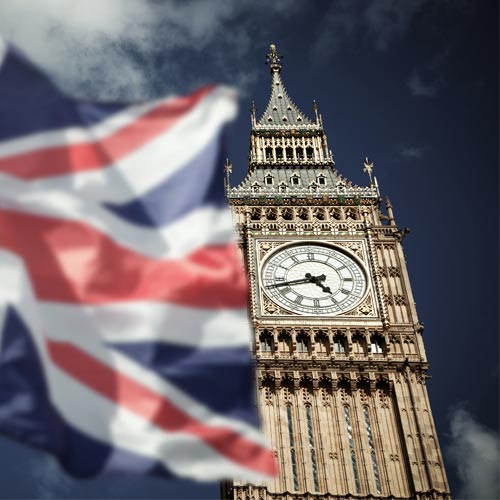Pressure equipment for the UK markets (UKCA)
The Pressure Equipment (Safety) Regulations 2016 has introduced new regulatory requirements for the design, construction and certification of pressure equipment placed on the market within Great Britain.
The term Pressure Equipment refers not only to vessels but to piping, pressure accessories and safety accessories as well. The purpose of the Regulations is to harmonise health and safety legislation with respect to pressure equipment in Great Britain.
The PESR has a wide scope and subject to certain exclusions, it is applicable to all pressure equipment and assemblies of pressure equipment, with a maximum allowable pressure greater than 0.5 bar above atmospheric pressure. This includes boilers, vessels, piping, pressure accessories and safety accessories. Hence anything from a steam generating power station to a stop valve can be included.
Meeting regulations and requirements
In order to meet the requirements of the Regulations, pressure equipment falling within its scope will have to undergo conformity assessment and display the UKCA mark. In most cases the conformity assessment process will involve an Approved Body. This can include design appraisal, inspection or assessment of the quality management system, dependent on the conformity assessment procedure selected.
Approved Bodies are appointed by the Secretary of State to carry out conformity assessment procedures determined by the Regulations, see Schedule 1A. The approved bodies will be accredited by the United Kingdom Accreditation Service (UKAS).
For Northern Ireland the situation is a little different, since 01/01/2021 any goods manufactured in GB for Northern Ireland should have both CE and UKNI mark on it. The UKNI marking is never applied on its own it is always accompanied by a EU conformity marking, such as the CE marking. Goods with the CE and UKNI marking cannot be placed on the market in the EU.
The UK rules
The scheme rules are to be applied to any activity relating to Certification of products under The Pressure Directive. These Rules are mandatory and reflect the content of the UK Regulations. Any change to the application of the Rules can only be with the formal, documented approval from Zurich.
These Rules are to be read in conjunction with PESR and all terms used in these Rules shall have the special meaning as detailed in PESR, save as otherwise provided in these Rules.
These Rules apply to all activities undertaken under PESR. The Rules apply to Zurich and the Applicant as appropriate.
The pressure equipment process
- On receipt of a complete application form, Zurich shall where appropriate advise of proposed completion date for the work
- A budget estimate of the cost shall be advised if required prior to undertaking any works associated with the application
- Design assessment
- A prototype of the equipment which is to be subjected to type examination shall be subjected to a full examination by Zurich. In all cases this shall include witness of functional tests and pressure tests, as appropriate
- Monitoring of final assessment. Under these modules Zurich undertakes surveillance of the final assessment of the Equipment. The nature and frequency of such inspections will be outlined in an inspection specification
- Product/Unit verification. Zurich undertakes stage inspections. The type and extent of these inspections will be outlined in an inspection specification
- Production, product and full quality assurance. Inspection activities will normally be undertaken as part of the surveillance activities. The inspections will be determined at the time of the visit dependent on the stage of construction
- Quality system and surveillance.

Online reporting
Access all your inspection activity whenever you need it, via Crimson, our online reporting tool.

Our accreditations
Useful inspection information
The term - 'Competent Person'
The Management of Health and Safety at Work Regulations 1999, (MHSWR) Regulation 7 (1) states that every employer shall, subject to paragraphs (6) and (7), appoint one or more competent persons to assist him in undertaking the measures he needs to take to comply with the requirements and prohibitions imposed upon him by or under the relevant statutory provisions and by Part II of the Fire Precautions (Workplace) Regulations The Provision and Use of Work Equipment Regulations 1998, (PUWER) Approved Code of practice (ACoP) states that ‘The competent person should have the necessary knowledge and experience'.
Zurich Engineering as a 'Competent Person/Body'
In order to comply with the approved codes of practice for the regulations under which plant and equipment is subject to periodic in-service inspections or thorough examinations, a Competent Person is likely to be a corporate body rather than an individual because of the necessary requirement to have access to a wide variety of technical expertise and specialist services such as non-destructive testing (NDT). One indication of competence is accreditation and certification. For inspection bodies, there are several indicators of competence and Zurich Engineering hold the following:
- UKAS accreditation - ISO17020 Type A inspection body.
- UKAS accreditation - ISO17065.
- Quality Management System Certification - BS EN ISO 9001.
- Trade Association (SAFed) membership.
- Compliance to SAFed Standard SS01 (assessed as part of Inspection Body accreditation).
Reporting status and defect code guide
Serious defects (AE)
This status indicates that a defect that poses (or could pose) a risk of injury to persons has been identified and that it must be reported to the enforcing authority. For most items, a defect that is required to be reported to the enforcing authority also poses an immediate or imminent danger to persons and the report will indicate this. For power presses, defects that need to be reported to the enforcing authority include those that do not pose immediate or imminent danger to persons. If the defect is not ‘immediate’, the report will indicate the date by which any rectification work should be undertaken.
Serious defects (AN)
This status indicates that a defect that poses (or could pose) a risk of injury to persons has been identified but that it does not require reporting to the enforcing authority. If there is immediate or imminent danger to persons, then the report will indicate this. If there is no immediate danger to persons, the report will indicate the latest date by which any rectification should be undertaken.
'B' defect (BD) or Other defect (in the case of power presses)
This status indicates that a defect has been identified but that, in the engineer surveyor's judgement, it does not pose a specific risk of injury to persons as defined in the respective regulations to which the item has been inspected. The defect should be assessed by the customer, as soon as reasonably practicable, and appropriate action taken if deemed necessary by the customer.
Deleted item (DL)
Indicates item has been removed from the schedule.
Not located (NL)
Indicates that an Engineer Surveyor has not been able inspect or thoroughly examine the item because the customer has not presented it for inspection or thorough examination and the engineer surveyor has been unable to locate or identify it.
Not available (NV)
Indicates that an item has been identified and located but we have not been able to complete an inspection or thorough examination because the item was not able to be inspected or thoroughly examined, e.g., out of service awaiting repair or not adequately prepared
OK
Indicates that an inspection took place and no defects were detected. However, the customer should view the reports for observations as these may provide useful information.
Customer advice (CA)
Indicates a Customer Advice, issued for important advice / informational purposes only.
Postponement (PD)
Indicates a Pressure item examination has been postponed in accordance with regulation 9(7) of the Pressure Systems Safety Regulations 2000 (PSSR)
General notes
We recommend that all reports of inspection and thorough examination are reviewed to ensure you are aware of the content.
Any item that has not been inspected by the due date on the current report of inspection or thorough examination should be taken out of service until the statutory inspection has taken place unless it has been postponed in accordance with regulation 9(7) of PSSR. Where defects have been identified and reported as requiring remedial action within a specified time, these should be rectified within the specified time period.
For all defects we recommend that the customer should review any relevant risk assessments and working procedures to ensure the continued safety of employees and other people that might be affected.
Managing statutory equipment can be difficult and needs tight control to avoid potential issues when equipment is used beyond its due inspection or thorough examination date. One way to control the use of equipment is to physically tag or “colour code” when it has been inspected or thoroughly examined and is safe to use.
Various types of colour coding can be used in different ways to distinguish when a piece of equipment is still safe to use and these options can be discussed with our teams
Whilst colour coding can be a cost-effective method of indicating the suitability of the equipment for further use, there are other options available for the control of equipment. Date stickers, date tags and rubberised tags are all potential options depending on the environment in which equipment is used, and Zurich Engineering are able to offer a number of options depending on your needs, so please speak to our teams to discuss.
More information

Engineering inspection
Find out about our other engineering inspection services, from lifting equipment to pressure systems

Engineering insurance
Zurich Insurance Company Ltd offer a wide range of engineering insurance covers for owned and hired-in plant and machinery

Engineering technical services
Find out more about our Technical Services offerings


